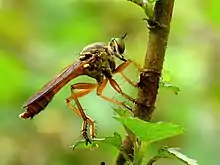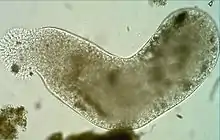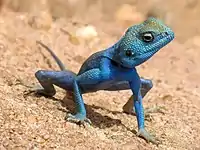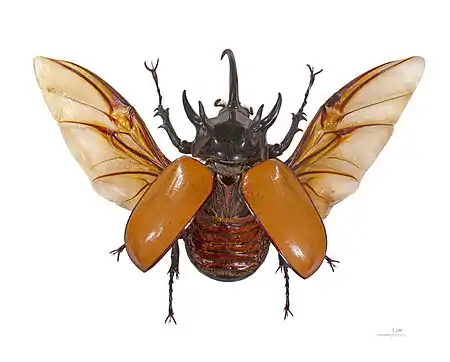|
Hawedeare af Wikispecies |
Taxón Navigazión
|
 |
.jpg.webp) |
 | |
| Michotamia aurata | Heliconia angusta | Balistapus undulatus | Chroicocephalus ridibundus |
.jpg.webp) |
.jpg.webp) |
 |
 |
| Aepyceros melampus | Phyllidia varicosa | Pelomyxa palustris | Pseudotrapelus sinaitus |
Wikispecies éntdégga
Zåmmorwad mid ZooKeys A Zåmmorwad zwischen Wikispecies und ZooKeys is åhkindigt worn. Mid PhytoKeys gibts dé gleich' Vaeihboarung. Bideln voh ZooKeys und PhytoKeys wern af Wikimedia Commons afféglon und in Wikispecies gnuzt. A bsundarer Autor José Vicente Barbosa du Bocage A Portugiasischer Zóológ und Bólitiker. Er wor da Kurator fir Zóológie am Naturhistoarischen Museum auf Lissabon. Dé Zóológiesåmmlung am Lissaboner Museum is nooch eam "Bocage-Museum" gnånnt. Er hod 200 taxónómische Fluugschriften iwer Spåhviicher, Végel und Fiisch vafosst. Anno 1880 is a Marineminister und spoder Aussenminister worn. Er hod aa'ran Hauffer Oarten sejwer entdéggt. |
Species of the monthFive-horned BeetleSome facts about this beetle:
A rhinoceros with five horns? Well, Eupatorus gracilicornis is not quite a rhinoceros but nevertheless it is a fascinating creature. This extravagant beetle is boldly colored with shiny jet-black while the elytra or fore wings are colored yellow or gold. It has four large horns on the pronotum (the foremost thorax segment) and one extra-long cephalic (of the head) horn. The body is covered by a thick exoskeleton and a pair of thick wings lie atop another set of membranous wings underneath, allowing the beetle to fly, although not very efficiently, owing to its large size. The flying season is usually in September, when most of the males usually appear to wait for copulation. Rhinoceros beetles – the Dynastinae – are a subfamily of the scarab beetle family (Scarabaeidae). They are also known as Hercules beetles, unicorn beetles, or horn beetles. There are over 300 described species of these beetles, best known for their bizarre shapes and large size. |
|
|
